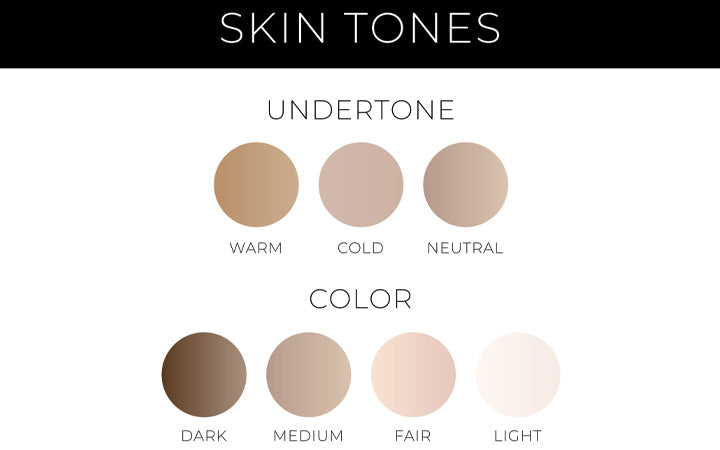A top makeup brand’s foundation ended up looking grey on your skin? That’s because the product was not meant for your skin undertone. The key to flawless makeup is understanding your skin tone and undertone.
If you like to do your own makeup, it is time you get your basics right. Read on to understand what we mean.
Highlights:
1. Difference Between Skin Tone And Skin Undertone?
Skin tone is the surface skin color, whereas skin undertone is the subtle hue underneath the surface. Skin tone is determined by the amount of melanin (skin pigment) present in the uppermost layer of your skin.
The 4 Main Types Of Skin Tones Are:
- Light
- Fair
- Medium
- Deep (Dark)
The 3 Main Types Of Skin Undertones Are:
- Warm
- Cool
- Neutral

2. How To Determine Your Skin Tone?
While each skin tone can have different complexions and can be broken down into ‘very light’, ‘very deep’, etc, you can determine the broader type of your skin tone through the following ways:
A. Examine Your Jawline
This area is usually less affected by skin color changes than the rest of your face. Check your freshly-washed skin in this area under natural sunlight. Try to determine if it is light, medium or deep.

B. Listen To What Your Friends Say
If your friends say you’re very “fair,” your skin tone is mostly light. If they’re always pointing out how tan you look, you may be medium. If you look pale in the winter, but tan in the summer, you may be deep.
3. Best Ways To Determine Your Skin Undertone
You can try the following tests to know your skin undertone:
Test 1 - Vein Test
Examine the color of your veins on the underside of your wrists.
- If your veins are blue or purple in color, you most probably have a cool undertone.
- If you have greenish veins, you have a warm undertone.
- If you are not sure which color is most evident in your veins, you are likely to have a neutral undertone.

Test 2 - Jewelry Test
- If silver jewelry looks flattering on your skin, you have a cool undertone.
- If gold jewelry looks flattering on your skin, you have a warm undertone.
- If both look flattering on you, you have a neutral undertone.

Test 3 - White Paper Test
Hold a blank piece of white paper next to your face under the skin. If your skin appears more yellow, then you're probably warm. If your skin looks pinkish, then you're probably cool.
Test 4 - Sun Test
Does your skin tan easily without any burning sensation when you are out in the sun? If yes, you have a warm or neutral undertone. Otherwise, you fall in the cool undertone category.

Test 5 - Color Test
Check the color of your clothes against your skin and see which ones complement you.
- You have cool undertones if cool colors like blue suit you.
- You have warm undertones if warm shades like the yellow suit you.
- You have a neutral undertone if any and every shade suits you.
4. Why Knowing Your Undertone Matters?
There are many combinations of undertones and skin tones. Knowing your undertone can help you pick the right:
A. Clothes
After you know your skin undertone, you can pick the right colored-clothes to look your best. Warm tones can wear warm colors and cool tones can wear cool colors.
B. Makeup
Now that you’ve figured out your undertone, it is time to pick the right foundation, eyeshadow colors and lipsticks. Choose warm shades if you have warm undertones, and cool colors if you have cool undertones. This makes your makeup compliment your natural complexion.
C. Hair Color
Warm skin tones should pick cool hair colors, while cool skin tones need to go for warm hair colors.
5. Does Skin Tone Change With Age?
You may experience darkening of some areas of your skin as you age. The patchy appearance of skin color in the face and hands of older people is due to the uneven distribution of pigment cells or melanocytes.
Skin tones can change with the season and sun exposure too, but undertones remain the same.
Now that you know how to pick your perfect makeup, tell us how you found out your skin tone.
Recommended Products
Was this Article helpful?
- Least helpful
- Most helpful











